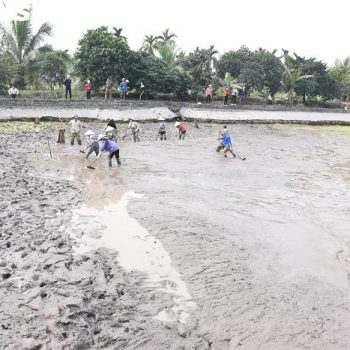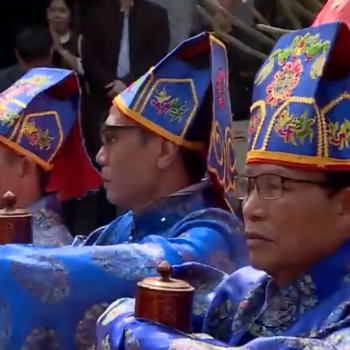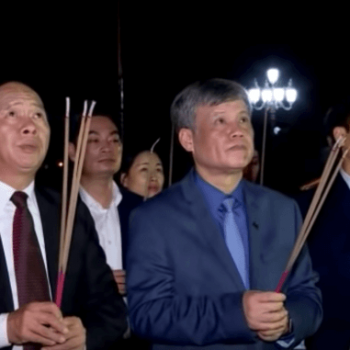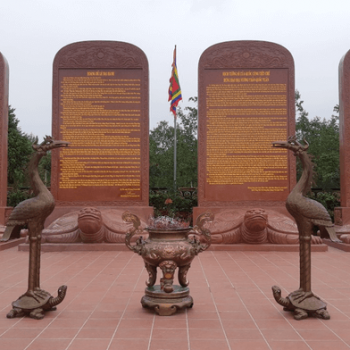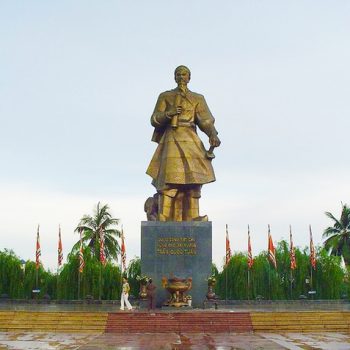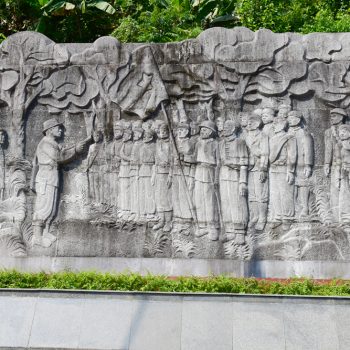NDO – The discovery and excavation of Bach Dang stake ground in Lien Khe commune, Thuy Nguyen district, Hai Phong city is an important piece of evidence which helps provide further traces back to the great Bach Dang Victory in 1288, experts have said.

More important evidence found related to historic 1288 Bach Dang Victory
Local leaders and archaeologists gathered at a seminar held in Hai Phong city on December 21 to discuss excavation results of Cao Quy stake yard in Bach Dang Giang relic complex.
Previously, a wooden pile ground believed to be related to the Battle of Bach Dang by the Tran dynasty during the war against Mongol invaders in 1288 had been discovered on the Bach Dang River in Hai Phong.
The local authorities, along with the Vietnam Institute of Archaeology and the relevant functional agencies, excavated the relics on 950 m2 in Cao Quy village, Lien Khe commune, Thuy Nguyen district. 27 wooden stakes dating from 1270-1430 were found buried in the ground, which were part of the old riverbed that had been filled over the time.
Based on archaeological survey results combined with historical documents, scientists initially identified that Cao Quy stake yard may be related to the great Bach Dang Victory in 1288, witnessing the Tran dynasty’s army and people defeat the Mongol invaders on the Bach Dang river.
Assoc. Prof., Dr. Bui Van Liem, former Deputy Director of Vietnam Institute of Archaeology, a member of the group involved in excavating the site, said that historical relics in Thuy Nguyen district, along with scientific evidences on identification of different specimens, have contributed to supplementing the evidences in the initial identification of the battle of Bach Dang on this piece of land.

Hai Phong city leaders and scientists surveyed the excavation site. (Photo: NDO/Ngo Quang Dung)
Assoc. Prof., Dr. Doan Dinh Lam, Institute of Geological Sciences (Vietnam Academy of Science and Technology), said that the geology and tidal creeks of this area in the history all show the relevance of newly discovered relics in relation with the resounding victory of the Tran dynasty in the battle against the Yuan – Mong army in 1288 and there may be many similar stake grounds around this area.
Experts also confirmed that archaeological results in Lien Khe commune have a special significance, helping researchers and specialised agencies to identify to be accurate to a further degree regarding the battle of Bach Dang. With historical evidences, maps and recorded documents as well as archaeological foundlings, it was initially determined that Thuy Nguyen was also a battlefield centre of Bach Dang Victory in 1288.
The ancient history of Vietnam records that, in the 10th and 13th centuries, on the Bach Dang River, three fierce naval battles against the northern invaders occurred, with the resounding feats associated with the military genius of three national heroes Ngo Quyen, Le Hoan and Tran Hung Dao. These feats make the Bach Dang River more sacred and mysterious and still to this day attract the attention of many researchers from around the world as well as Vietnamese historians from the past to the present

An overview of the stake yard. (Photo: NDO/Ngo Quang Dung)
Along with historical relics discovered in Quang Ninh province before and Hai Phong recently, researchers suggested that it is necessary to continue to survey to discover the stature, significance and contributions of the local people in the region in the nation’s history of anti-aggression and also the great respect for the ancestors’ merit in the struggle for national construction and defence, as well as offering solutions to preserve and promote these great historical values.
The Hai Phong authorities also affirmed their determination in announcing the excavation results on Cao Quy stake ground on the media, while mapping plans to preserve and promote its historical values.
Describe from the Vietnam National Museum of History on Bach Dang wooden stakes dated 1288 AD, which discovered in Chanh River, Yen Hung district, Quang Ninh province in 1976, said that these are vestiges of the naval battle against the Mongol in 1288 at Bach Dang River commanded by Supreme Commander Tran Hung Dao. The stakes are about 1.5-3m long and dark brown. One end was driven into the river base. One pointed end has many fissures as the result of water corrosion. For naval battles, the stakes were fixed when the tide was down, the average distance between the stakes was about 0.9-1.2m. In addition to stakes that stood straight, some were inclined 45 degrees in order to target boats that went near the river bank. Based on a thorough study of the advantages of the terrain and ups and downs of the tide, together with scientific calculation and exact prediction, the naval battle using stakes showed the military genius of Tran Hung Dao, as well as the unique warfare tactics and military creativity of the Dai Viet people during the Tran Dynasty.
The Mongols’ defeat in 1288 crushed the Mongols’ ambitions to conquer all of Southeast Asia and it still known as one of Vietnam’s greatest victories in its military history
Source: Nhân Dân online





